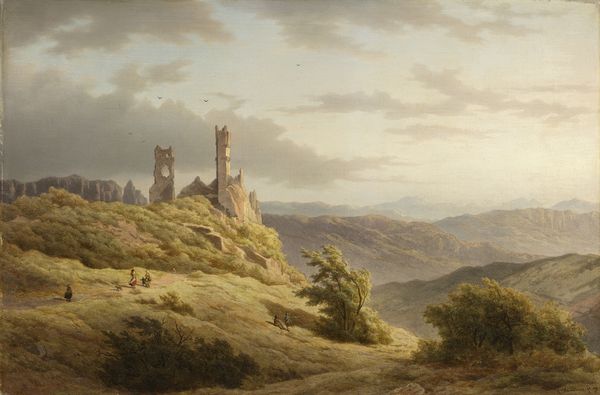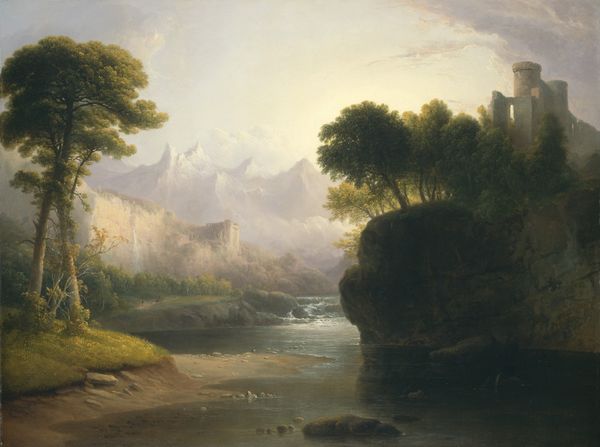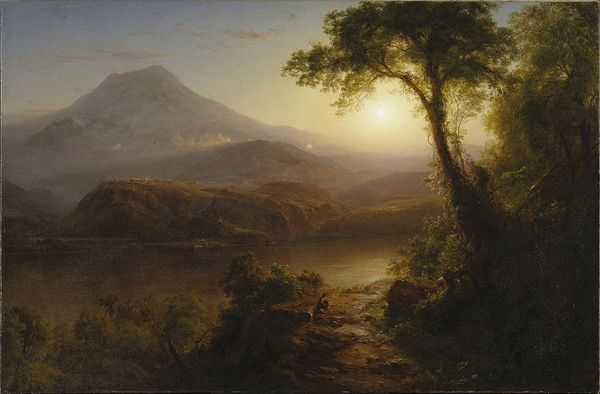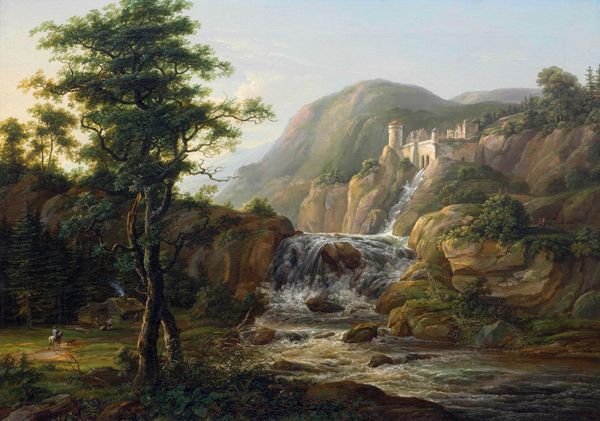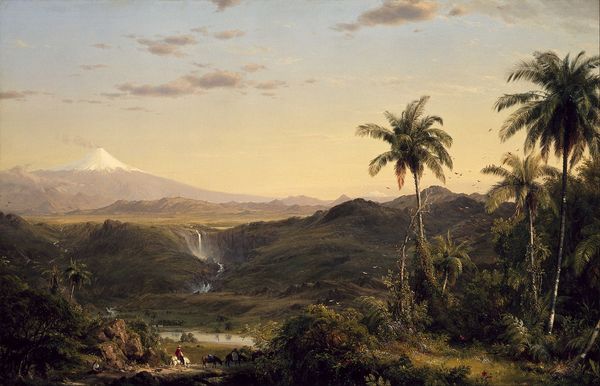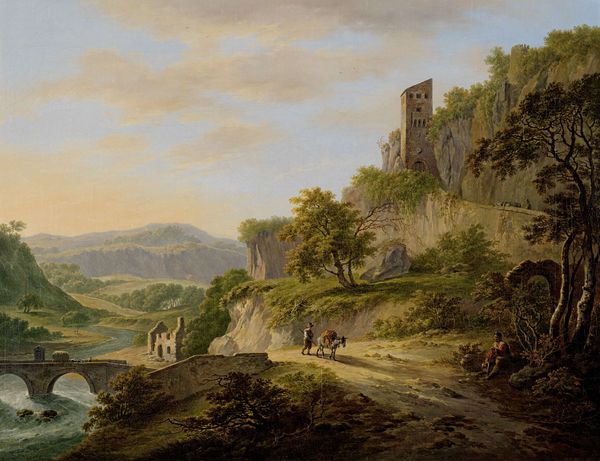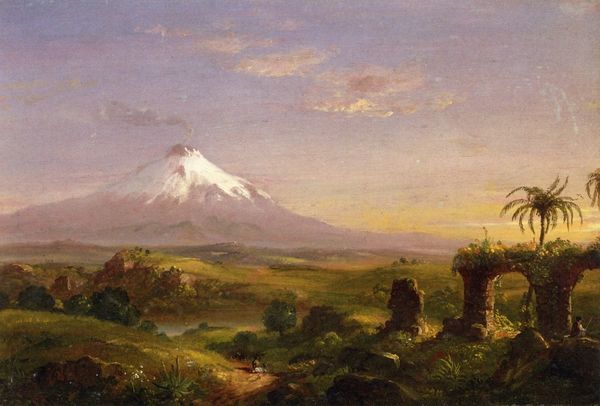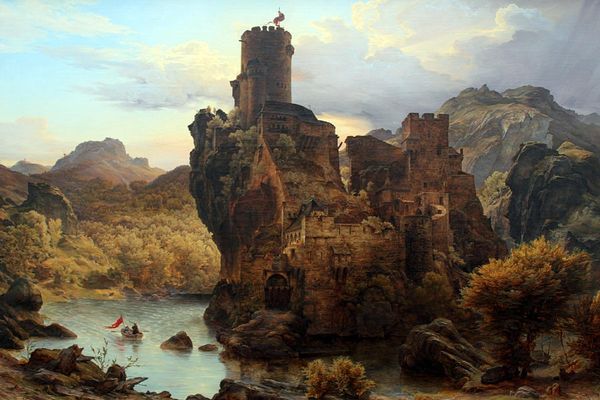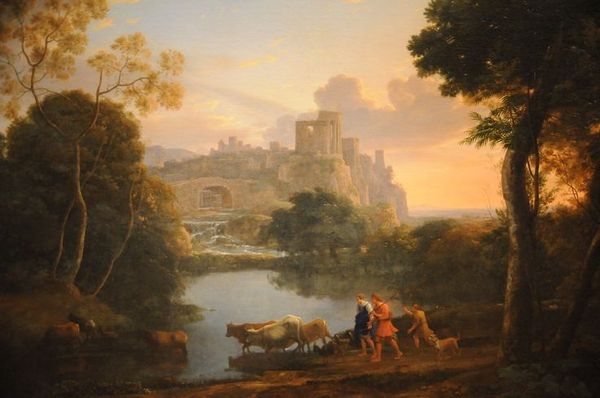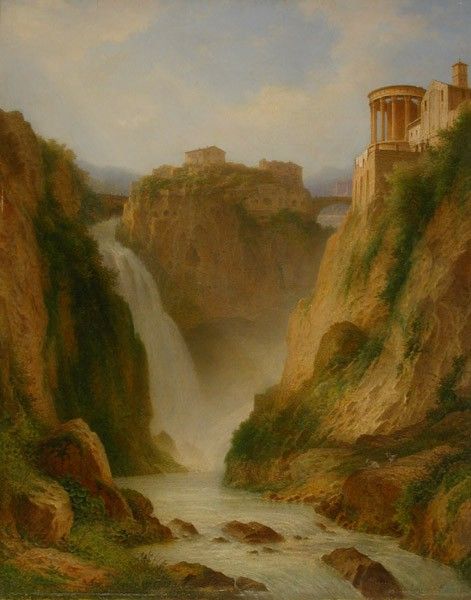
Copyright: Public Domain: Artvee
Curator: What a scene! This artwork, "Chimborazo Volcano," was created in 1884 by Frederic Edwin Church. The canvas breathes with oil paint. It's remarkable how Church captures a specific location, yet transcends mere topography. Editor: It does possess an otherworldly feel, almost like a stage set. The pinkish-gold light hitting the crumbling tower, set against that placid, dreamy backdrop…it’s like a memory, filtered through rose-tinted spectacles, rather than an exact record. Curator: Precisely. The tower is a potent symbol. Ruins often represent the transience of human achievement in the face of nature's enduring power. Editor: I suppose the volcano becomes the great leveler, looming in the background, unperturbed. And what’s interesting is the tension created. We have this detailed foreground and then…smudge. Curator: A smudge implying infinity, I'd argue! Consider Romanticism's embrace of the sublime - nature overwhelming, but inspiring awe. The light in Church’s landscapes, especially, is carefully constructed to elevate them from reportage to...almost religious experience. It’s a beacon, isn't it? Highlighting the decay but also hinting at transcendence. Editor: That resonates. I can't shake the sense, though, that despite the majesty, there's an undertow of melancholy. This wasn't the era of colour photography; paintings, they did try to portray things objectively but at a subconscious level also managed to express the deep feeling that permeated into everyday life of the artist himself! Maybe it's that quiet little dog lurking in the shadows near the base of the tower… Curator: Or perhaps it’s the overall acknowledgement that even seemingly invincible structures – mountains, empires – eventually fade. Church was aware of geological time, of histories layered upon histories. This scene reflects not just a volcano, but humanity’s eternal dance with oblivion. Editor: Well, it's definitely more complicated than just a pretty landscape. I get this nagging feeling it asks more questions than it gives answers. Which is, for a painting this lovely to look at, an unusual feat! Curator: Art history always proves that there's far more depth to paintings than their aesthetic can provide.
Comments
No comments
Be the first to comment and join the conversation on the ultimate creative platform.

